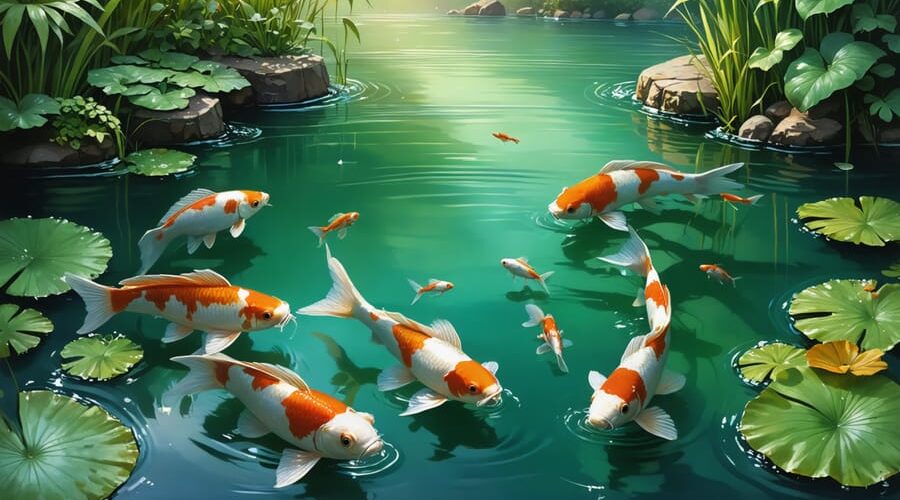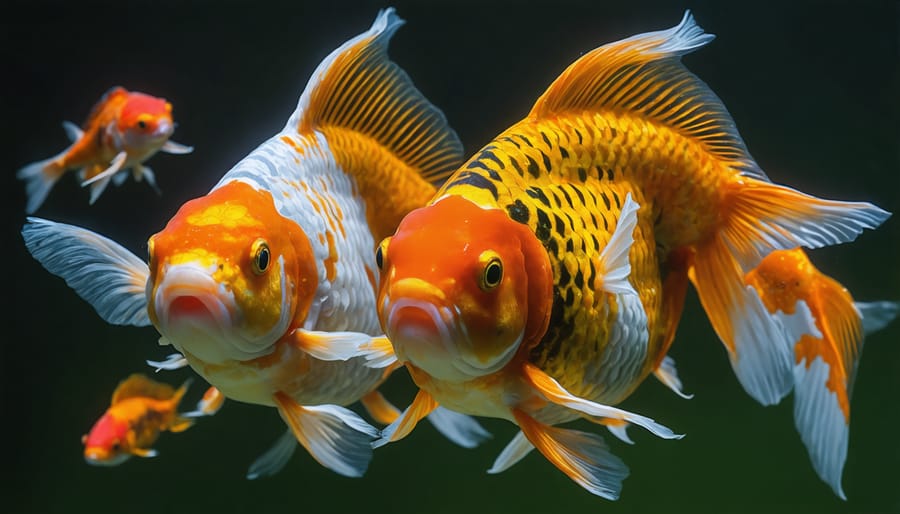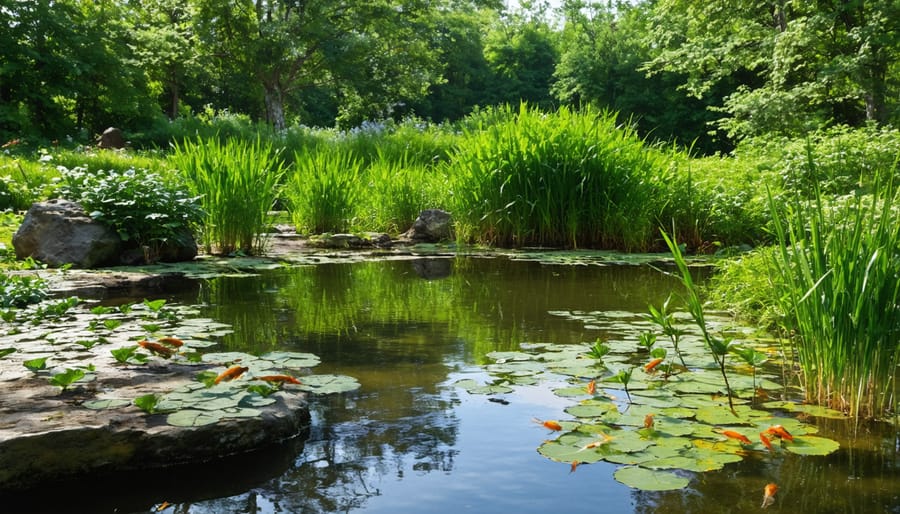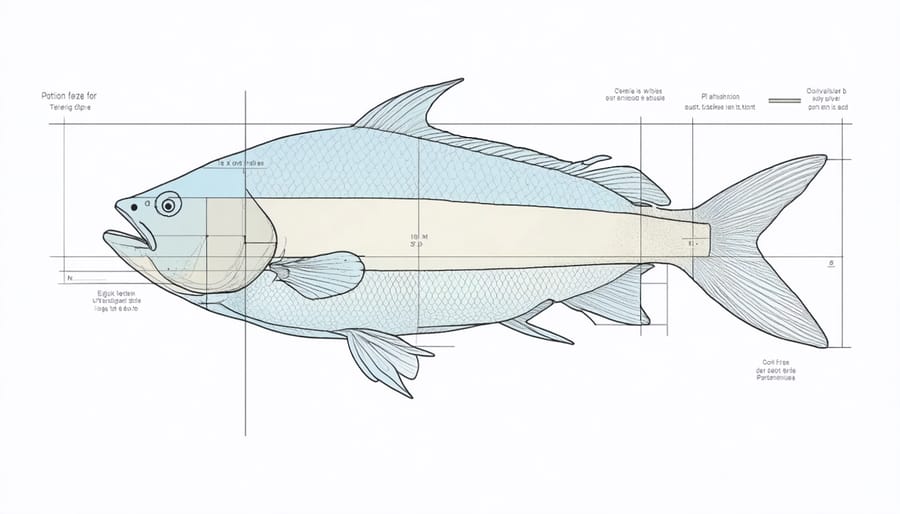
Feed Your Pond Fish Like a Pro: Smart, Sustainable Practices That Work
Sustainable fishing practices shape our oceans’ future and the dinner choices we make today. As global fish populations face increasing pressure, understanding which seafood options are environmentally responsible has never been more critical. This comprehensive guide empowers you to make informed decisions about sustainable fish consumption, whether you’re shopping at your local market or dining out.
From tracking fish population health to understanding aquaculture practices, sustainable fishing involves balancing human needs with marine ecosystem preservation. By following key sustainability indicators – including fishing methods, species population status, and habitat impact – we can ensure our seafood choices support ocean health for generations to come.
Learn to identify sustainable seafood options through certification labels, seasonal availability, and local sourcing. Discover which popular fish species are thriving and which need time to recover. With practical tips for selecting environmentally responsible seafood and understanding fishing industry practices, this guide helps you become an informed consumer who can enjoy seafood while protecting our marine resources.
Together, we can support responsible fishing practices and ensure the long-term viability of our ocean’s bounty through mindful consumption and informed choices.
Understanding Your Pond Fish’s Nutritional Needs

Common Pond Fish and Their Diets
Different pond fish species have unique dietary requirements for optimal health and growth. Koi fish, known for their vibrant colors and patterns, thrive on a balanced diet of high-quality pellets rich in proteins and vitamins. For comprehensive information about koi health and nutrition, consider supplementing their diet with fresh vegetables like lettuce and watermelon.
Goldfish are less demanding and can maintain good health with standard pond pellets, but they benefit from occasional treats like duckweed or water lettuce. These natural food sources also help maintain water quality by absorbing excess nutrients.
For bottom-feeding fish like weather loaches or catfish, sinking pellets are essential as they rarely come to the surface to feed. These species also appreciate live foods such as bloodworms or brine shrimp as occasional treats.
Remember to adjust feeding amounts based on water temperature – fish eat more during warm months and require less food during winter. Always remove uneaten food after 5-10 minutes to prevent water quality issues and maintain a sustainable pond ecosystem.
Seasonal Feeding Adjustments
Just like us, fish have different appetites throughout the year. During warm summer months, when water temperatures rise above 65°F (18°C), fish are more active and require more frequent feeding – typically 2-3 times daily. Their metabolism is at its peak, helping them grow and maintain energy levels.
As temperatures drop in fall, gradually reduce feeding frequency to once daily. When water temperatures dip below 50°F (10°C), fish become less active and their digestion slows significantly. During winter, especially if your pond freezes over, feed only once every few days with special cold-water food, or stop feeding altogether if temperatures drop below 39°F (4°C).
In spring, as waters warm up, slowly increase feeding frequency again. Start with small amounts once daily, and watch how your fish respond. A good rule of thumb is to offer only what they can consume within 5 minutes. Remember that overfeeding in any season can lead to water quality issues and fish health problems.
Keep a thermometer in your pond to monitor water temperature – it’s your best guide for adjusting feeding schedules throughout the year.
Creating a Natural Feeding Environment
Beneficial Plants for Natural Fish Food
Creating a natural food source for your fish starts with selecting the right essential aquatic plants that attract beneficial insects and provide supplementary nutrition. Marginal plants like cattails and rushes are excellent choices, as they attract dragonflies, mayflies, and other insects that eventually become fish food. Water mint and watercress not only look beautiful but also provide shelter for small aquatic creatures that fish love to snack on.
Consider adding floating plants like water lilies and duckweed, which provide shade and create perfect hiding spots for insects. These plants also help maintain water quality while offering fish natural food options. For smaller ponds, butterfly-attracting plants like purple coneflower and black-eyed susans planted around the edges will bring insects that occasionally fall into the water, becoming tasty treats for your fish.
Remember to include submerged plants like hornwort and anacharis, which naturally harbor small crustaceans and insect larvae. These tiny organisms are especially important for young fish development. By creating this natural ecosystem, you’ll reduce the need for artificial fish food while promoting a healthier, more sustainable pond environment.
For best results, aim for a mix of different plant types, ensuring year-round food availability. This approach not only supports your fish but also creates a beautiful, low-maintenance water garden that practically feeds itself.

Encouraging Beneficial Microorganisms
Creating a thriving ecosystem in your pond starts with promoting beneficial microorganisms that support natural fish nutrition. These tiny helpers break down waste, maintain water quality, and provide essential nutrients for your aquatic friends.
Start by adding natural substrate like gravel or sand to your pond bottom, creating perfect homes for helpful bacteria. Regular addition of beneficial bacteria products, especially during spring and summer, helps kickstart this microscopic community. Consider introducing water plants like hornwort or water lilies, which provide surfaces for these organisms to colonize.
Maintain moderate aeration to keep oxygen levels optimal for microbial growth. Avoid excessive cleaning that might disturb these colonies – a little organic matter is actually good for your pond’s ecosystem! Adding barley straw or leaves in mesh bags creates natural biofilters where helpful microorganisms can thrive.
Keep chemical use to a minimum, as harsh treatments can harm these beneficial communities. Instead, focus on natural methods like regular, gentle maintenance and proper fish stocking levels. Monitor water quality regularly, but remember that a slightly green tint usually indicates healthy phytoplankton growth.
For best results, feed your fish at consistent times and avoid overfeeding, which can overwhelm the natural filtration system. With patience and proper care, you’ll develop a self-sustaining ecosystem where fish and microorganisms work together in perfect harmony.
Smart Supplemental Feeding Practices
Choosing the Right Commercial Foods
Selecting the right commercial fish food is crucial for maintaining healthy and sustainable fish populations in your pond. Start by choosing foods that match your fish species’ natural diet – for example, koi and goldfish typically thrive on pellets containing a mix of proteins, vitamins, and minerals.
Look for foods with high-quality protein sources listed as the first ingredients, such as fish meal or krill. Avoid products with excessive fillers like wheat or corn meal, as these provide little nutritional value and can lead to water quality issues. The protein content should typically range between 32-38% for most pond fish.
When it comes to sustainability, opt for brands that use responsibly sourced ingredients and environmentally friendly packaging. Many reputable manufacturers now clearly state their sustainability practices on their labels. Consider foods made from sustainable aquaculture sources rather than wild-caught fish meals.
Pay attention to pellet size – it should match your fish’s mouth size to prevent feeding difficulties. For mixed-size populations, consider keeping multiple pellet sizes on hand. Floating foods are generally better than sinking varieties as they allow you to monitor feeding behavior and remove uneaten food easily.
Supplement your fish’s diet with seasonal variations. In warmer months, higher-protein foods support active growth, while in cooler months, switch to lower-protein, more digestible foods. Consider adding natural supplements like garlic or spirulina for immune system support.
Store food properly in a cool, dry place and check expiration dates regularly. Fresh food maintains its nutritional value better and reduces waste. Remember that overfeeding is both wasteful and harmful to water quality, so always feed only what your fish can consume in about five minutes.

Proper Feeding Techniques
Feeding your pond fish correctly is crucial for their health and your pond’s sustainability. Just like us, fish need the right amount of food at the right times to thrive. A good rule of thumb is to feed your fish only what they can consume within 5 minutes, usually 2-3 times per day during warm months.
Start with a small amount of food and watch how your fish respond. If they eat it all quickly, you can add a bit more. Overfeeding is one of the biggest mistakes pond owners make – uneaten food breaks down in the water, affecting water quality and potentially harming your fish.
During spring and summer, when temperatures are above 50°F (10°C), feed your fish regularly. As temperatures drop in fall, gradually reduce feeding frequency. When winter approaches and temperatures fall below 50°F, fish enter a semi-dormant state and require little to no food.
Choose high-quality fish food appropriate for your species. For example, koi need different nutrition than goldfish. Consider using floating food pellets – they’re easier to remove if uneaten and help you monitor consumption. Keep a feeding diary to track patterns and adjust portions accordingly.
Create a feeding station in your pond by consistently feeding in the same spot. This helps you monitor fish behavior and makes cleanup easier. Use a feeding ring to contain floating food and prevent it from spreading across the pond surface.
Remember, it’s better to underfeed than overfeed. Your fish can safely go several days without food, but overfeeding can quickly lead to water quality issues and health problems.
Monitoring and Maintaining Balance
Signs of Over and Underfeeding
Recognizing proper feeding amounts can make all the difference in your fish’s health and your pond’s ecosystem. When fish are overfed, you’ll notice excess food floating on the surface long after feeding time, cloudy water, and a build-up of waste at the bottom of your pond. Your fish might also appear sluggish or bloated, and algae growth often increases due to excess nutrients in the water.
Underfeeding shows different signs – fish may appear thin or lethargic, with visible skeletal features. You might notice them becoming more aggressive during feeding times or frantically searching for food. Some fish may even start nibbling on plants or smaller pond mates.
To maintain the right balance, feed your fish only what they can consume within 5 minutes. During warmer months, feed them 2-3 times daily, reducing to once daily or less during cooler periods. If you notice uneaten food, reduce portions slightly in subsequent feedings.
A helpful tip is to use a feeding ring to contain food in one area, making it easier to monitor consumption. Keep a feeding diary to track amounts and times – this helps establish a routine that works for your specific pond ecosystem. Remember that different fish species have varying nutritional needs, so research your specific varieties and adjust accordingly.
Water Quality Management
Proper feeding practices play a crucial role in helping maintain proper water quality in your pond. When fish are overfed, uneaten food sinks to the bottom and decomposes, releasing harmful nutrients that can lead to algae blooms and decreased oxygen levels.
Start by feeding your fish only what they can consume within 5 minutes, typically 2-3 times per day during warm months. During colder seasons, reduce feeding frequency as fish metabolism slows down. It’s better to underfeed than overfeed!
Use a floating feed that’s appropriate for your fish species and size. This allows you to monitor consumption and remove any leftover food before it sinks. Consider using automatic feeders to maintain consistent portions and timing, especially if you’re away frequently.
Keep a feeding diary to track patterns and adjust amounts seasonally. Watch your fish’s behavior during feeding time – healthy fish are typically eager eaters. If they’re not interested in food, it might indicate water quality issues or illness.
Remember to check water parameters regularly, especially after adjusting feeding routines. Clear water doesn’t always mean healthy water, so invest in reliable testing kits and monitor ammonia, nitrite, and nitrate levels. Your fish will thank you with vibrant health and active behavior!
As we’ve explored throughout this guide, sustainable fish feeding practices are essential for maintaining a healthy pond ecosystem and protecting our environment. By following proper feeding schedules, choosing the right types of food, and monitoring water quality, you can create a thriving habitat for your fish while minimizing waste and environmental impact.
Remember that overfeeding is one of the biggest challenges in pond management. Start with small portions, observe your fish’s behavior, and adjust accordingly. Quality food may cost more initially, but it leads to healthier fish and cleaner water in the long run.
Make sustainable choices by selecting fish food from responsible manufacturers who use sustainable ingredients. Consider supplementing commercial feeds with natural food sources in your pond, such as aquatic plants and beneficial insects, which can help create a more balanced ecosystem.
Keep a feeding journal to track your fish’s eating patterns and maintain consistent schedules. This simple practice can help you avoid waste and better understand your pond’s needs throughout different seasons.
By implementing these sustainable feeding practices, you’re not just caring for your fish – you’re contributing to environmental conservation and creating a more sustainable future for pond keeping. Start making these positive changes today, and enjoy watching your pond thrive while knowing you’re doing your part for the environment.
